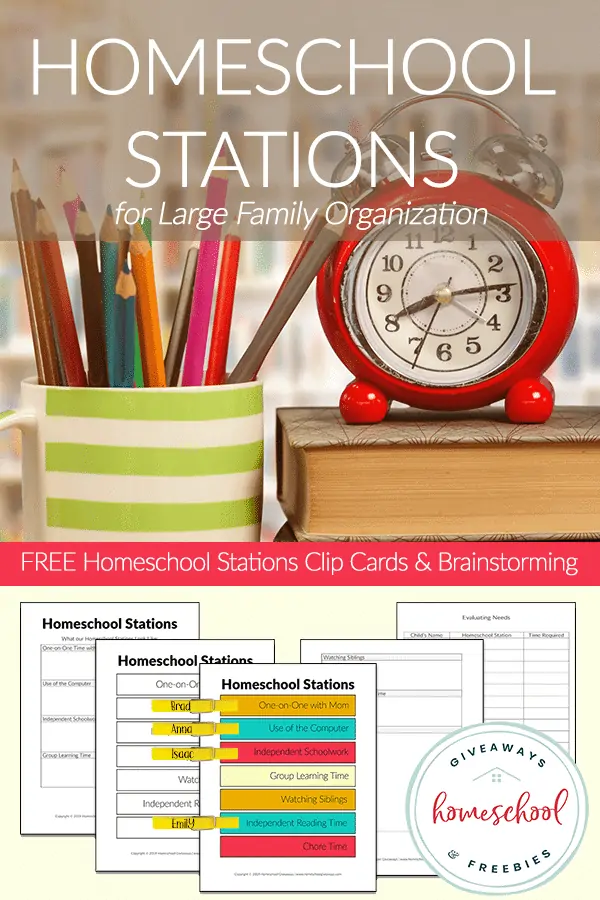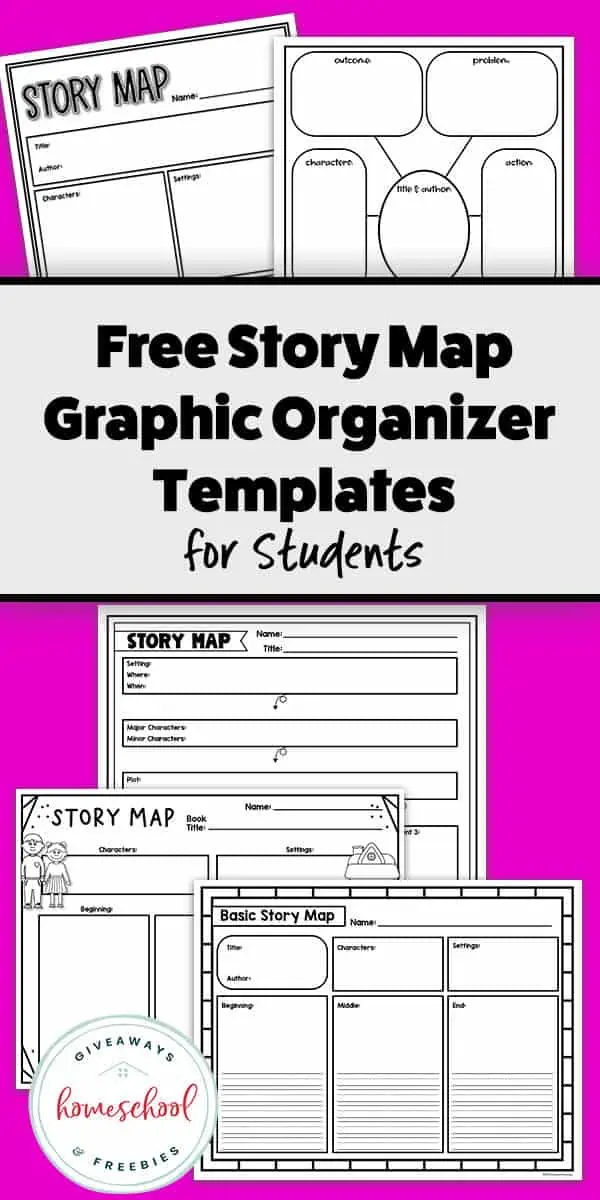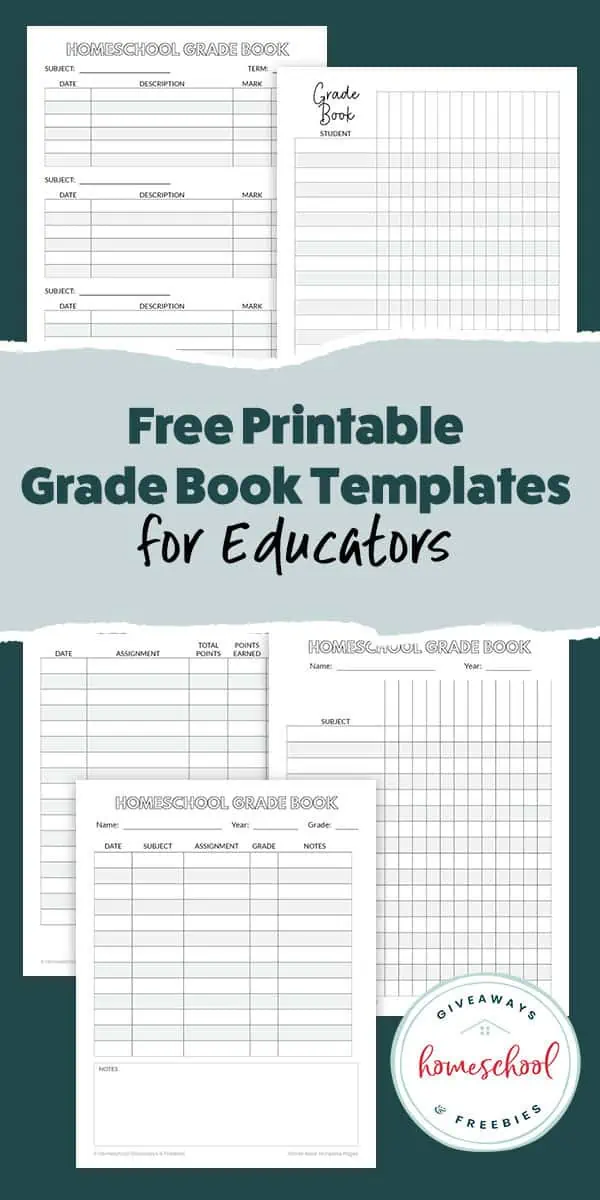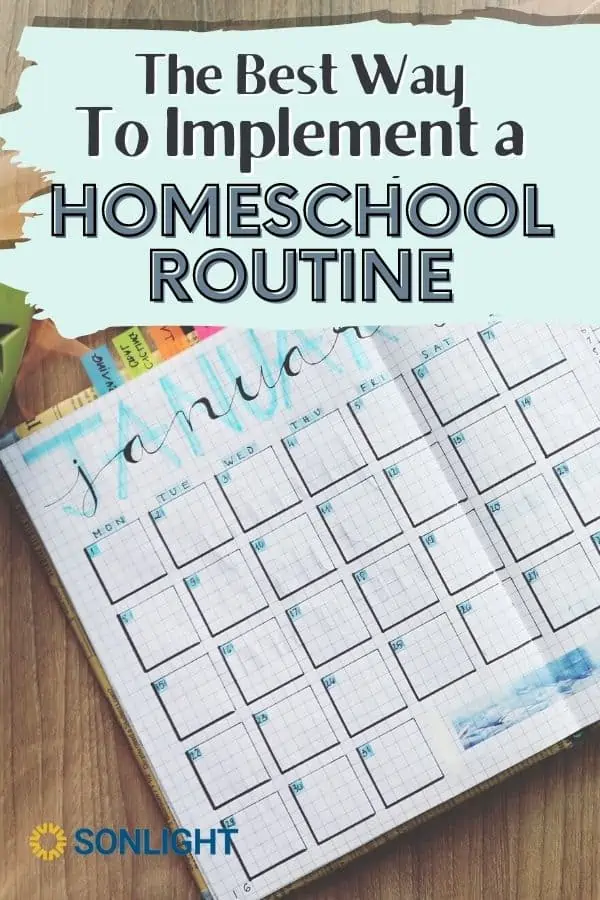Homeschool Stations for Large Family Organization (FREE Printable)
Published:
July 30, 2019

Contributor:
Carrie
Disclosure: This post may contain affiliate links, meaning if you decide to make a purchase via my links, I may earn a commission at no additional cost to you. See my disclosure for more info.
Homeschooling can be challenging, even if you are teaching just one child. When you are homeschooling multiple children of different ages, sometimes your homeschool hours can go from sunrise to sunset – and you STILL many not get everything done.
Balancing your time between each child who needs extra help, cooking, and household chores can be draining. That’s where setting up concrete homeschool stations comes into play.
Read on to learn more about how this can help your homeschool and be sure to grab our FREE Homeschool Station Printable at the end of this post.
What is a homeschool station?
A station is defined as a place or building where a specified activity or service is based. The keyword phrase here is specified activity.
When you put into use homeschool stations, you are establishing an activity for each of your children at specific intervals throughout your homeschool day. This can look differently for every homeschool family and you can use a paper planner, an online planner, or a laminated chart on the fridge, such as the freebie at the end of this post.
The idea of homeschool stations is to rotate your children’s activities to ensure each child gets the time they need according to their specific requirements, as well as to spread yourself out to spend individual, one-on-one time as needed.
Homeschool Station Ideas
One-on-One with Mom – This is pretty much what it sounds like, specified one-on-one time. This allows you to plan a part of your day that will focus on just one child’s individual needs. Sometimes a struggling student can get beyond their difficulties with just 30 minutes of undivided attention. Other times you can spend some quality time encouraging them with their progress.
Knowing that they will get you all to themselves is something children will look forward to. This is flex time and you can decide how much time each child needs. Some children may need more one-on-one time than others, and some days might require more time or allow for less time.
Independent Subjects – most students have work that they can complete independently. This would be a set chunk of time in which all of your children can do their independent work at the same time. Perhaps you can throw in a load of laundry or get lunch together during this time. Younger children can work on a small-motor activity, a coloring page, or play with blocks.
Computer Time – It’s pretty typical for homeschooling families to utilize one of the many opportunities for online learning. Perhaps you are using Teaching Textbooks 3.0 (online math curriculum that teaches your children AND does all the grading!). Or maybe you make use of Time4Learning for specific subjects, or ABCmouse.com for your young learners. This rotation time will allow each child time on the computer.
Older Sibling/Younger Sibling Time – If you have older children capable of keeping an eye on toddlers or young children, you can designate some time to having the older kids “work” with the younger children. This could be reading together, helping with school work, or playing with Legos®. During this time you might be working one-on-one with another child.
Independent Reading & Quiet Time – We have one homeschooler left and she is required to read for 40 minutes each day. This works for us because she enjoys what she reads. You can decide how much time is good for your family. Each child would find their own little quiet place and read for a set amount of time. You can set the timer and let them each know what their responsibilities are.
Perhaps your children are ages 4,8,11,14. Your four year old will not be able to read for 30 minutes, so you can allow him or her to look at books, build with blocks, or color quietly during this time. If they know the expectations up-front and you stick to “rules,” then they will hopefully get the hang of playing quietly (and maybe even look forward to it!).
If your 8 and 11 year old can handle reading for 30 minutes, then they read the entire time. If the 8 year old has melt-downs after 15 minutes, then for the other 15 minutes you could require them to draw a picture of what they read or do written narration.
And your young teen, they very well may be an avid reader and want to keep going – that’s totally fine.
Group Learning – There are some things you can teach your children all together, no matter the ages. Often times with a wide range of ages and abilities, you can adjust this group learning time to individual activities that go along with the material you are studying.
Here’s an example, with your children ages 4,8,11,14 again.
Let’s say you are using The Mystery of History. While you read the lessons aloud, your 4 year old can use one of the coloring pages, you can have your 8 year old work on their folderbook (lapbook), the 11 year old will do written narration on blank notebooking pages specifically made for The Mystery of History, and your 14 year old can use the informational notebooking pages that have questions.
With this example, each of your children are learning the same material, but engaging in activities that are suitable for their age and abilities.
Chores – If you designate a time each day (or multiple times a day) for chores, you can keep your house in order while making sure everyone is getting their work done. If you are busy doing everything AND trying to homeschool all on your own, you will never get everything completed. Heck, even with a well organized system, such as homeschool stations, you still may not get it all finished…and that is okay, because there is always tomorrow!
How to use the FREE Homeschool Station Printable:
We created some basic brainstorming pages that you can use to decide what each of your stations will look like. We have also included black and white, full color, and blank clip charts that you can use to keep track of everyone’s station time.
- Download and print the Homeschool Station Printable Chart.
- Cut it out to trim it a little if you’d like and laminate it.
- Get some wooden clothespins and use a sharpie to write your children’s names on each one. Also, create a clothespin for “everyone.”
- Throughout the day when it’s time for each child to be in their “station” you move their clothespin to the proper category on the chart. More than one child can be in the same station at the same time and you can use the “everyone” clip for independent subjects, reading time, or group learning.
Scroll down to get in your instant download of the Homeschool Stations printables.
You might want to have your children decorate his or her clothespins with paint, wiggly eyes, etc. just for fun. You can also have them write their own names on it! Here are some great ideas.
You can use these ideas and come up with your own system and homeschool stations that work for your family. The idea is to plan out what you want to do with each child and when for a smooth flowing homeschool day.
If you are looking for a way to keep your homeschool from burning-out, this homeschool scheduling method really helped us stay on track, while keeping our focus and and bringing harmony to our homeschool.
Download your FREE Homeschool Stations Clip Cards and Brainstorming Pages










